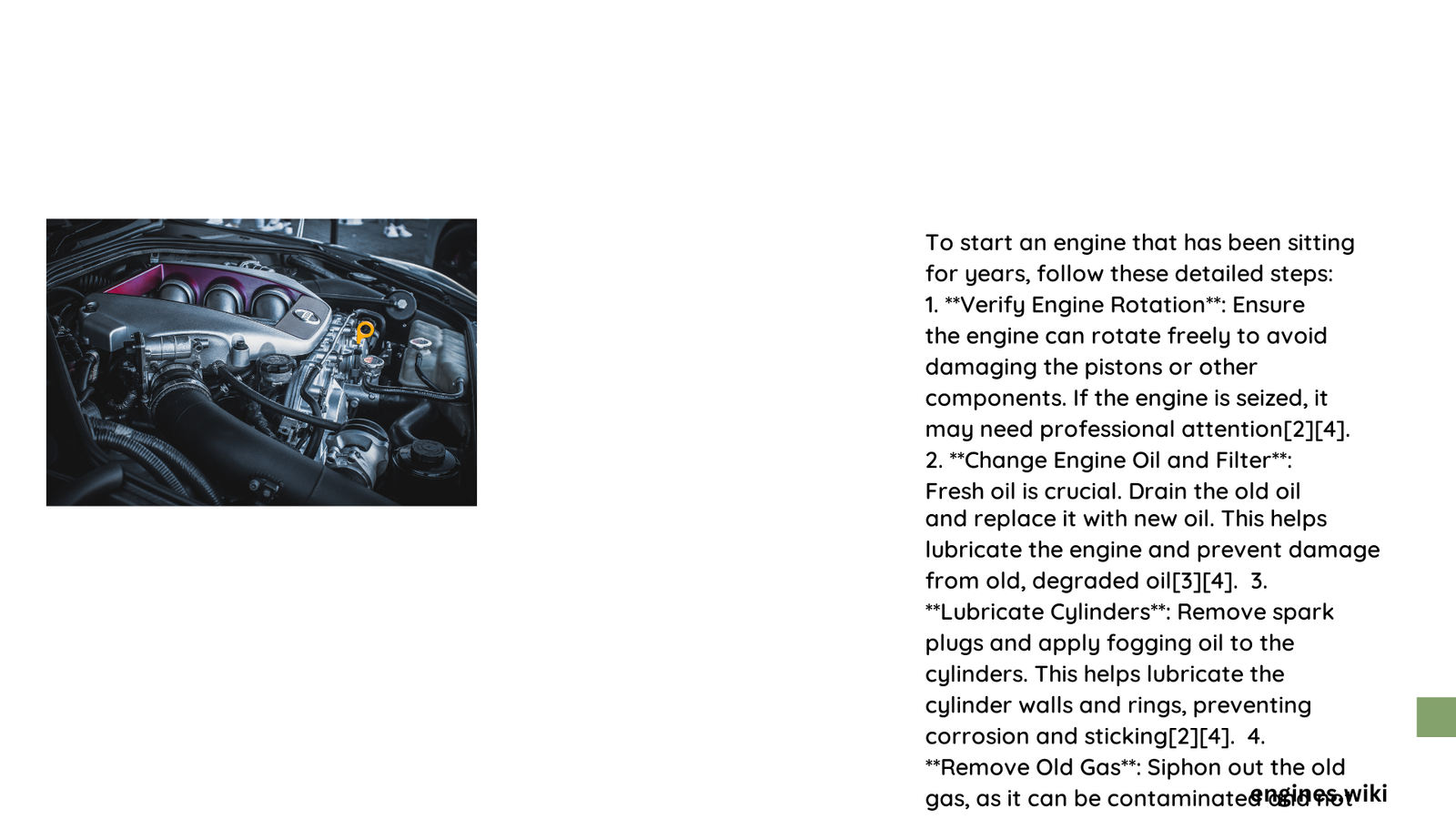Reviving a Dormant Engine: A Comprehensive Restoration Strategy
When an engine has been stationary for extended periods, its components deteriorate, creating complex challenges for restoration. Moisture, oxidation, and fuel system degradation can transform a once-reliable machine into a potentially non-functional system. This guide provides a systematic approach to breathe life back into an engine that has been sitting idle, ensuring safe and effective revival without causing irreparable damage.
What Happens When an Engine Sits Unused?
Engines left unused experience multiple degradation processes:
| Component | Potential Issue | Risk Level |
|---|---|---|
| Fuel System | Fuel oxidation | High |
| Battery | Complete discharge | Critical |
| Lubrication | Oil breakdown | Moderate |
| Seals/Gaskets | Dry rot | High |
How to Prepare for Engine Restoration?
Comprehensive Fuel System Assessment
Cleaning Strategies:
– Use high-quality fuel system cleaners
– Select additives with Polyetheramine (PEA)
– Ensure complete fuel system flush
– Check for potential contamination
Battery Resurrection Techniques
- Initial Voltage Diagnosis
- Use multimeter to check battery status
- Measure voltage across terminals
-
Ideal reading: 12.6 volts for full charge
-
Charging Protocols
- Select appropriate battery charger
- Use slow charging method (2-5 amps)
- Monitor temperature during charging
- Consider professional battery assessment
What Oil Maintenance Steps Are Critical?
Oil Replacement Procedure:
– Drain existing old oil completely
– Inspect for contamination
– Select appropriate viscosity grade
– Use high-quality synthetic oil
– Ensure correct oil quantity
How to Test Starter Motor Functionality?
Diagnostic Checklist:
– Measure solenoid resistance
– Inspect electrical connections
– Check for corrosion
– Verify ground connections
– Test starter motor engagement
Critical Safety Precautions
⚠️ Warning Indicators:
– Unusual engine noises
– Excessive smoke
– Resistance during manual rotation
– Unexpected fluid leaks
Tools Required for Engine Revival
Essential Equipment:
– Multimeter
– Battery charger
– Socket set
– Torque wrench
– Oil filter wrench
– Cleaning solvents
– Protective gear
Pro Tips for Successful Restoration
- Never rush the restoration process
- Document each step meticulously
- Be prepared for potential component replacement
- Consult professional mechanic if uncertain
Potential Complications to Anticipate
- Seized pistons
- Corroded bearings
- Fuel system blockages
- Electrical system failures
Final Recommendations
Patience and methodical approach are key when starting an engine that has been sitting for years. Each step requires careful execution and thorough inspection to prevent potential mechanical failures.
Cost Considerations
Restoration costs can range from $200 to $2,000 depending on the engine’s condition and required interventions.
Conclusion
Reviving a dormant engine demands technical knowledge, proper tools, and systematic approach. Following these guidelines increases the likelihood of successful restoration while minimizing potential damage.

